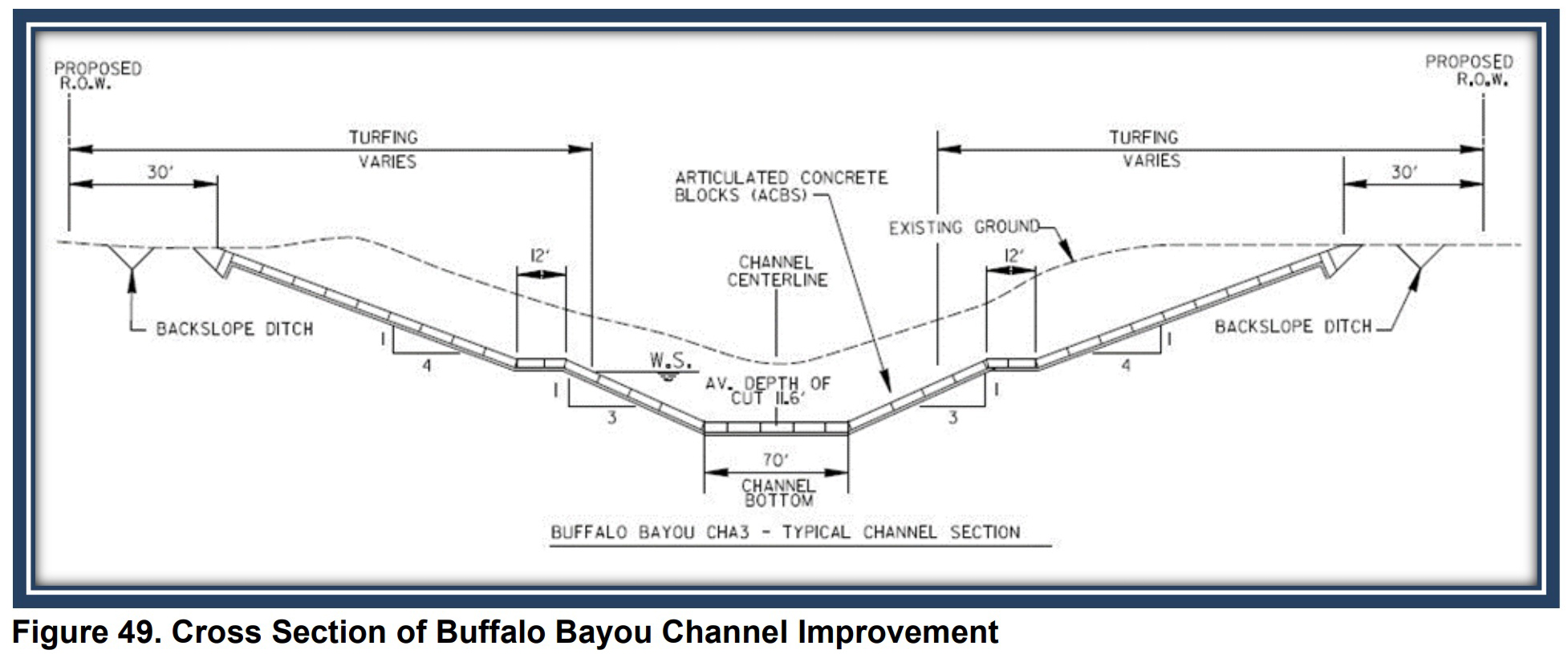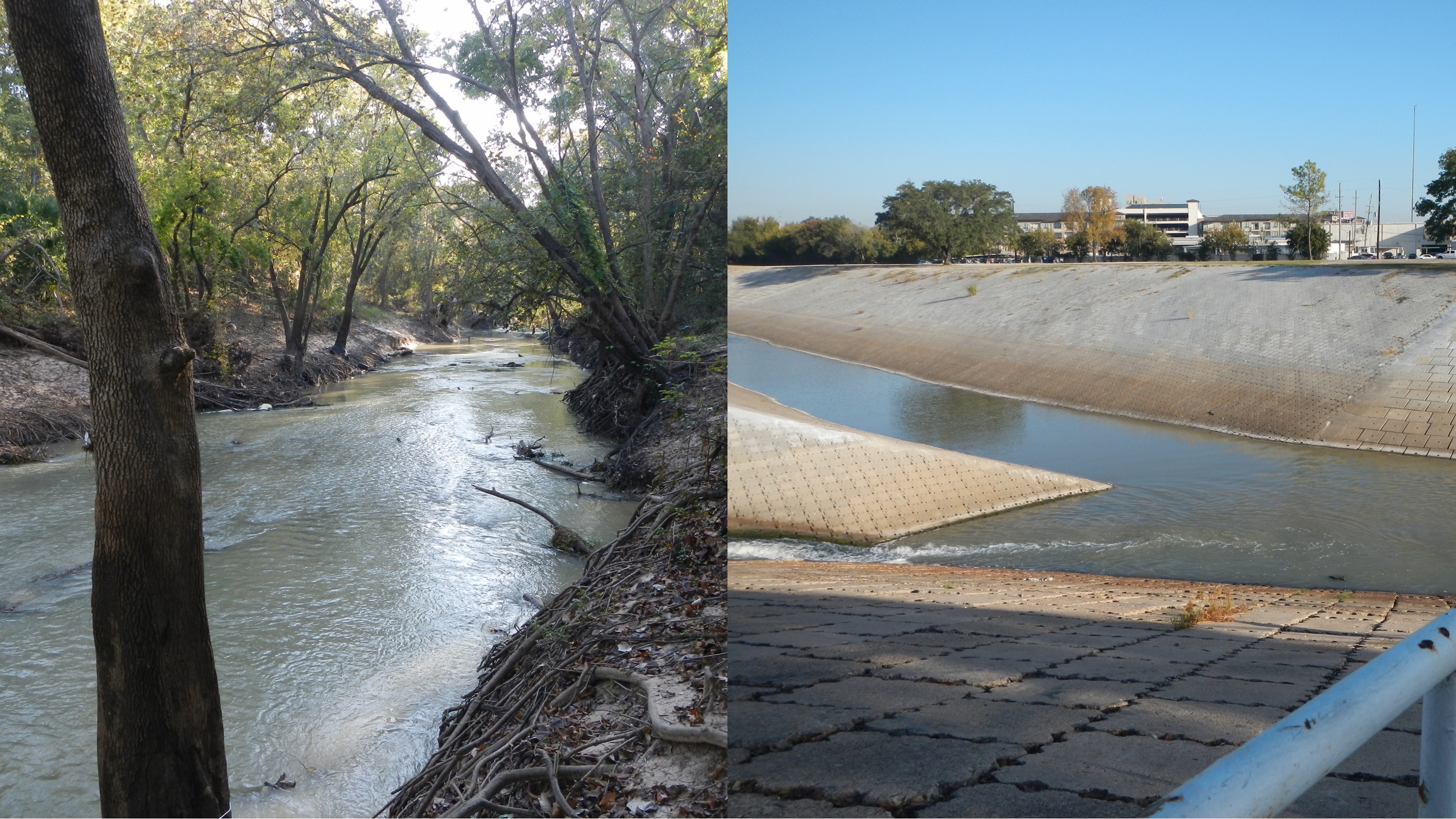Plans are being made to address flooding in Buffalo Bayou. Our informed input is needed now to insure that environmental values will receive a high priority.
Part way through its planning process, the U.S. Army Corps of Engineers has issued an Interim Report. The issues addressed by the report will continue to be very important well into the future.
The Corps considered a number of alternatives, some of which were put forward by conservation-oriented groups. In the Interim Report, some of these alternatives, such as tunneling or making excavations within the footprint of the existing Addicks and Barker Reservoirs, are being dropped from further consideration. Outside experts do not agree with some of the Interim Report’s conclusions, and, unfortunately, the underlying data and modeling results have not yet been made public.
Because water can overflow from Cypress Creek into Addicks Reservoir following large rains, the Interim Report looks with favor on a proposal, of great concern to environmentalists, to construct a large reservoir on the Katy Prairie. It would be almost as large as the Addicks or Barker Reservoirs, and it would have a huge impact on land that is being preserved by the Katy Prairie Conservancy.
A second alternative of great concern that is viewed with favor in the Interim Report is to “improve” Buffalo Bayou by making its channel deeper and wider, and line it with articulated concrete blocks, potentially all of the way from Barker Reservoir to a little beyond Montrose Blvd. The capacity of the enlarged channel would be more than seven times the original maximum release that was permitted for the Addicks and Barker Reservoirs: over 17% of what typically goes over Niagara Falls.)

We need to:
- Submit comments by email to BBTRS@usace.army.mil. To make this easier, several organizations such as Bayou City Waterkeeper have provided online tools.
- Get informed. The most thorough option would be to read the entire text of the Interim Report, but if you need a quicker way to get up to speed, here are several suggestions:
- View the video of long-time attorney Steve Robinson explaining the content of the Interim Report.
- View the video of Mary Anne Piacentini, President and CEO of the Katy Prairie Conservancy, describing nature-based alternatives.
- Read the op-ed article in the Houston Chronicle that was written on behalf of Houston Stronger, a coalition of business and conservation groups concerned with flood resiliency in the Houston region.
- Find out more about the tunneling option (being employed in San Antonio, Austin, and Dallas), which would be much less destructive of habitat than would some of the other engineering-based alternatives.
Update: Good News – Public input on Buffalo Bayou flooding plans is being heard.
An article that appeared in the Houston Chronicle’s November 24 online edition reports:
“Advocates believe the Corps’ interim Buffalo Bayou and Tributaries Resiliency Study took an outdated approach, giving short shrift to nature-based options. The study suggested pursuing projects such as digging Buffalo Bayou wider and deeper and building a third reservoir over the Katy Prairie, ideas that advocates believe would harm natural spaces that residents value.”
“In her own letter Friday, [U.S. Rep. Lizzie] Fletcher reiterated what she described as ‘the importance of building consensus on the path forward.’ She said she hoped the Corps will continue to accept public comment outside of the formal review period.
‘It is a priority of my constituents, and of the Congress, to include natural infrastructure and nature-based solutions,’ she wrote. ‘It is also the strong preference of my constituents to preserve the natural beauty and environment of Buffalo Bayou in any path forward.’ ”
Two views of Buffalo Bayou:

Photo Credits: “Example of Articulated Concrete Block Armoring” and “Cross Section of Buffalo Bayou Channel Improvement” by the U.S. Army Corps of Engineers. “Two Views of Buffalo Bayou” by Tom Douglas.